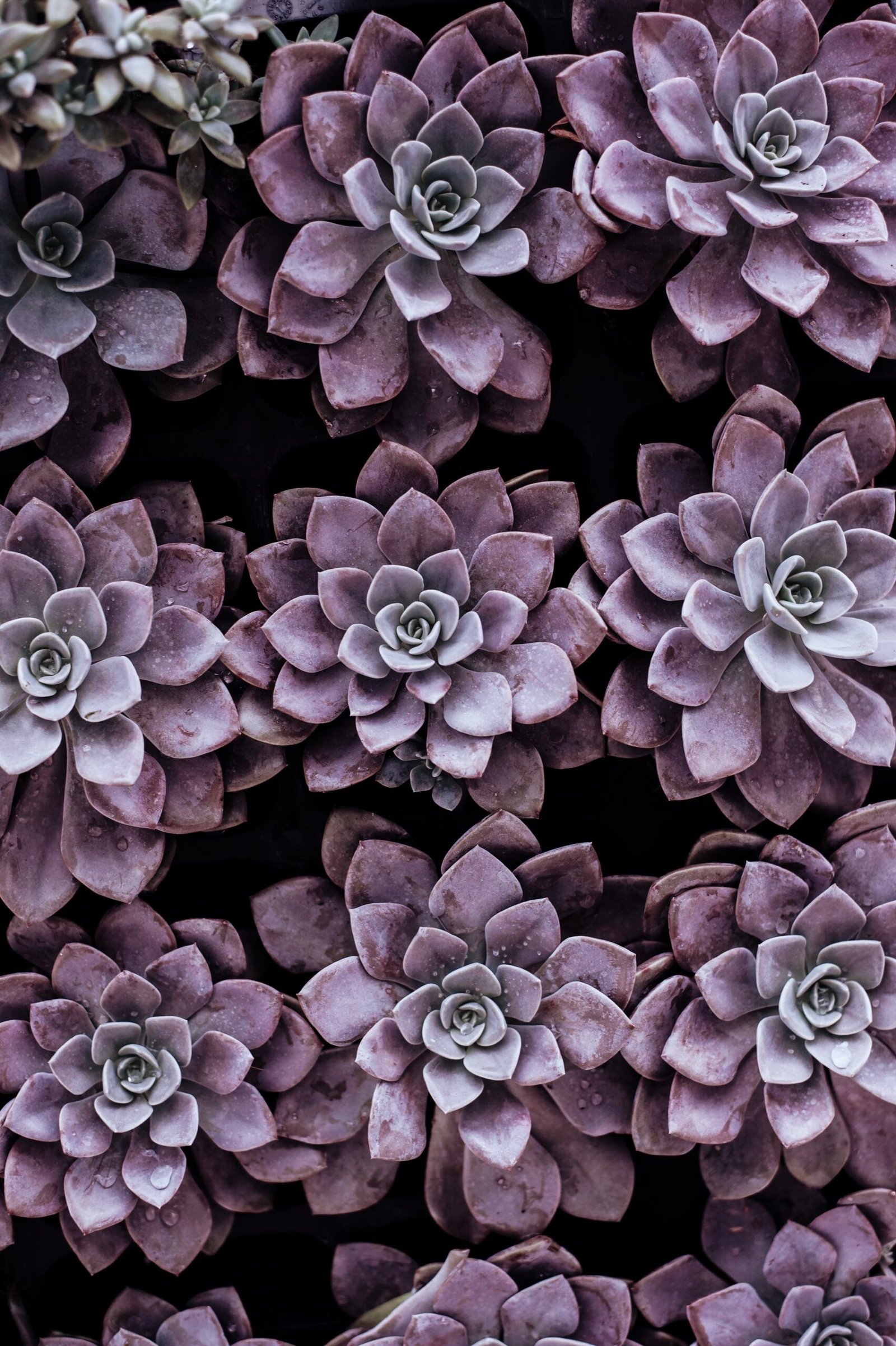The article titled “How To Propagate A Money Tree” offers a concise guide on the method and techniques required to successfully propagate a Money Tree plant. The article provides valuable insights and step-by-step instructions on how to reproduce and grow a new Money Tree through simple yet effective propagation methods. By following these guidelines, readers can learn how to expand their collection of Money Trees and enjoy the benefits of a thriving indoor garden.
Check Other Money Aesthetic Aricles
Preparing for Propagation
Before beginning the process of propagating a money tree, it is important to ensure that all the necessary preparations are in place. This includes selecting a healthy parent plant, choosing the right time for propagation, and gathering the required tools and materials.
Selecting a Healthy Parent Plant
When selecting a parent plant for propagation, it is crucial to choose a healthy and robust specimen. Look for a money tree that has strong and vibrant leaves, free from any discoloration or signs of disease. The plant should also have a well-established root system and should not show any signs of stress or wilting.
Choosing the Right Time
Choosing the right time for propagation is essential to increase the chances of success. Generally, the best time to propagate a money tree is during the spring or early summer when the plant is actively growing. This ensures that the plant’s natural growth hormones are at their peak, promoting faster and healthier root development in the propagated cuttings.
Gathering Necessary Tools and Materials
Before embarking on the propagation journey, it is important to gather all the necessary tools and materials. These include clean pruning shears or scissors, rooting hormone (optional), suitable containers for water or potting, a well-draining potting mix, and adequate fertilizers for the growing plants. Having these essentials ready will make the propagation process much smoother and more efficient.
Methods of Propagation
There are several methods of propagating a money tree, each with its own benefits and requirements. The most common methods include water propagation, air layering, stem cuttings, and leaf cuttings. Each method has its own set of steps and considerations, providing different opportunities for success.
Water Propagation
Water propagation is one of the easiest and most popular methods of propagating a money tree. It involves placing the leaf or stem cuttings in a container of water and allowing them to develop roots before transferring them to soil.
Air Layering
Air layering is a more advanced method of propagation that involves creating roots on a section of the plant while it is still attached to the parent plant. This method is more suitable for larger money tree specimens with well-developed branches.
Stem Cuttings
Stem cuttings involve taking a section of a healthy stem and encouraging it to develop roots on its own. This method is often used when the goal is to produce multiple new plants from a single parent plant.
Leaf Cuttings
Leaf cuttings are another viable option for propagating a money tree. This method involves taking a healthy leaf from the parent plant and stimulating it to develop roots. Leaf cuttings are particularly suitable for species of money trees that produce multiple leaves from a single stem.

Check Other Money Aesthetic Aricles
Water Propagation
Water propagation is a straightforward method that requires minimal equipment and is suitable for both stem and leaf cuttings. When following the water propagation method, it is important to consider the following steps:
Selecting a Suitable Container
Choose a clean and transparent container that provides enough space for the cuttings to grow roots. A glass jar or a clear plastic container is ideal, as it allows you to monitor root development easily. Make sure the container is clean and free from any contaminants that may affect the health of the cuttings.
Preparation of the Cuttings
Using clean pruning shears or scissors, take stem or leaf cuttings from a healthy parent plant. Ensure the cuttings are approximately 4-6 inches long with a few nodes or leaves intact. Remove any excess leaves or nodes from the lower portion of the cutting to prevent them from falling into the water and potentially causing rot.
Placing the Cuttings in Water
Fill the chosen container with clean, room temperature water. Place the prepared cuttings into the water, making sure that at least one or two nodes are submerged. Avoid overcrowding the container, as this can lead to poor air circulation and potential rotting of the cuttings.
Optimizing the Growing Conditions
Place the container in a location with indirect sunlight, as direct sunlight may cause the water to heat up and promote algae growth. Maintain a consistent water level by regularly replenishing or changing the water to prevent stagnation. Monitor the development of roots, ensuring that they are white and healthy.
Potting the Rooted Cuttings
Once the cuttings have developed a substantial root system, it is time to pot them in a suitable growing medium. Choose a well-draining potting mix that is suitable for money trees and fill small pots or containers with it. Gently remove the rooted cuttings from the water and place them into the pots, ensuring that the roots are covered with soil. Water the newly potted cuttings thoroughly and place them in a bright location with indirect sunlight.
Air Layering
Air layering is a more advanced propagation method that allows you to create roots on a specific section of a money tree branch while it is still attached to the parent plant. This method requires careful attention to detail and involves the following steps:
Identifying an Appropriate Branch
Choose a healthy and sturdy branch on the parent plant that is at least one year old. The selected branch should be pliable enough to bend without breaking but not too young to withstand the air layering process.
Preparing the Branch
Clean the selected branch by removing any leaves and small side shoots that may obstruct the air layering process. Gently scrape the outermost layer of the bark in a circular motion around the branch, creating a ring approximately one inch wide. This process encourages the growth of new roots in the specific section of the branch.
Creating an Incision and Applying Rooting Hormone
Make a vertical incision in the middle of the prepared ring and apply a rooting hormone to promote root development. Rooting hormones are available in different forms, such as powders or gels, and can increase the success rate of air layering by stimulating root growth.
Wrapping and Enclosing the Incision
Wrap a moist sphagnum moss or a suitable rooting medium around the incision, ensuring that it remains in place. Cover the wrapped section with plastic wrap or a propagation bag, securely sealing it to maintain moisture and prevent the rooting medium from drying out.
Waiting for Roots to Develop
Monitor the air layer regularly and maintain a moist environment by misting the rooting medium when necessary. Roots typically develop within a few weeks to a few months, depending on the species and environmental conditions. Once roots have developed, they will be visible through the plastic wrap or propagation bag.
Separating the Propagated Section
Once the roots have sufficiently developed, carefully remove the plastic wrap or propagation bag. Cut the branch just below the rooted section, ensuring that the new roots are undisturbed. Plant the newly propagated section in a suitable potting mix, water thoroughly, and provide a stable and conducive environment for further growth.

Check Other Money Aesthetic Aricles
Stem Cuttings
Stem cuttings are a popular method for propagating money trees, especially when the goal is to produce multiple new plants. This method involves taking a section of a healthy stem from the parent plant and encouraging it to develop roots. The following steps outline the process of stem cutting propagation:
Selecting a Healthy Stem
Choose a healthy and robust stem from the parent plant, ensuring that it is free from any signs of disease or damage. The stem should be approximately 4-6 inches long and have at least two or three nodes intact.
Sanitizing the Pruning Tools
Before taking the stem cuttings, it is essential to sanitize the pruning tools to minimize the risk of disease transmission. Disinfect the pruning shears or scissors by wiping them down with rubbing alcohol or a solution of bleach and water.
Taking the Cuttings
Using the sanitized pruning tools, make a clean diagonal cut just below a node on the selected stem. Remove any excess leaves or side shoots from the lower portion of the cutting, leaving a few intact at the top for photosynthesis.
Preparing the Cuttings
To increase the chances of successful rooting, dip the cut end of the stem into a rooting hormone powder or gel. This step is optional but can significantly enhance root growth and overall success rates.
Creating Optimal Environment for Rooting
Fill small pots or containers with a well-draining potting mix suitable for money trees. Make sure the soil is slightly moist but not overly wet. Create planting holes in the soil using a pencil or stick, and carefully insert the prepared stem cuttings into the holes.
Planting the Rooted Stem Cuttings
Place the potted stem cuttings in a warm and bright location with indirect sunlight. It is crucial to maintain consistent moisture in the soil by watering the cuttings regularly. After a few weeks, new growth should begin to emerge, indicating that the stem cuttings have successfully rooted. Once well-established, the newly rooted plants can be transplanted into larger containers or outdoor locations as desired.
Leaf Cuttings
Leaf cuttings provide another option for propagating money trees, particularly for species that produce multiple leaves from a single stem. This method involves taking a healthy leaf from the parent plant and stimulating it to develop roots. The process of leaf cutting propagation involves the following steps:
Choosing Healthy Leaves
Select mature and healthy leaves from the parent plant for propagation. Choose leaves that are free from any signs of disease, damage, or deformity. Avoid selecting leaves that are too young or too old, as they may not propagate successfully.
Preparing the Leaves
Gently remove the chosen leaves from the parent plant, ensuring that a small portion of the stem, known as the petiole, is attached to each leaf. Remove any excess leaves or side shoots from the petiole, leaving only the main leaf intact.
Placing the Leaves for Rooting
Fill small pots or containers with a well-draining potting mix suitable for money trees. Poke small holes in the soil using a pencil or stick and carefully insert the leaf petioles into the holes, burying them in the soil while keeping the leaf exposed.
Providing Ideal Environmental Conditions
Place the potted leaf cuttings in a warm and bright location with indirect sunlight. Maintain a slightly moist but not overly wet soil by watering the cuttings regularly. Leaf cuttings are particularly sensitive to moisture levels, so avoid overwatering, which can lead to rot or fungal diseases.
Transplanting the Rooted Leaf Cuttings
After several weeks, new plantlets should start to emerge from the base of the leaf. This indicates that the leaf cuttings have successfully rooted. Once well-established, the rooted leaf cuttings can be carefully transplanted into larger pots or outdoor locations, providing them with additional space for growth.

Caring for Propagated Money Trees
Proper care is essential to ensure the healthy growth and development of propagated money trees. The following aspects should be considered when caring for these plants:
Proper Watering
Money trees prefer a slightly moist but well-draining soil. Ensure that the potting mix is adequately watered, allowing excess water to drain away to prevent waterlogged roots. Avoid overwatering, as this can lead to root rot. Monitor the moisture levels regularly and adjust watering accordingly based on the specific needs of the propagated plants.
Optimal Light Requirements
Money trees thrive in bright, indirect sunlight. Place the propagated plants in a location that provides sufficient light without exposing them to direct sunlight, as this can scorch the leaves. If the plants are not receiving enough light, consider using a grow light to supplement their needs.
Maintaining Humidity
Money trees appreciate a humid environment, particularly during their initial stages of growth. To increase humidity around the propagated plants, consider placing a tray filled with water near them or using a humidifier. Additionally, misting the leaves regularly can also help maintain moisture levels and promote healthy growth.
Fertilizing the Plants
To encourage vigorous growth, it is recommended to fertilize propagated money trees regularly. Use a balanced, water-soluble fertilizer specifically formulated for houseplants and follow the instructions on the packaging. Avoid over-fertilizing, as this can lead to fertilizer burn or nutrient imbalance. During the growing season, apply fertilizer at regular intervals to provide the necessary nutrients for optimal growth.
Dealing with Pests and Diseases
Monitor the propagated money trees for any signs of pests or diseases. Common pests that can affect money trees include spider mites, mealybugs, and aphids. If pests are detected, treat the infested plants promptly using appropriate insecticides or organic pest control methods. To prevent diseases, avoid overwatering and ensure good air circulation around the plants. If disease symptoms occur, such as leaf spots or wilting, identify the issue and apply suitable treatments accordingly.
Transplanting Propagated Money Trees
After the propagated money trees have established a healthy root system, they may need to be transplanted into larger containers to accommodate growth. The transplanting process should be carried out carefully to minimize stress on the plants and ensure their continued growth and health. The following steps outline the process of transplanting propagated money trees:
Choosing the Right-sized Pot
Select a pot that is one size larger than the current container to provide the propagated money tree with sufficient space for root development. Ensure that the pot has drainage holes to prevent waterlogging and promote healthy root growth. Choose a pot made of durable, high-quality material to ensure its longevity.
Preparing the Potting Mix
Prepare a well-draining potting mix suitable for money trees by combining a good-quality potting soil with perlite or vermiculite to improve drainage. Alternatively, use a commercially available potting mix specifically formulated for houseplants. Fill the selected pot with the prepared potting mix, leaving enough room to accommodate the root ball of the propagated money tree.
Removing the Plant from its Current Container
Gently remove the propagated money tree from its current container by lightly tapping the sides of the pot and carefully sliding out the root ball. Handle the plant with care to avoid damaging the roots or stems. If the plant is tightly rooted, use a clean tool to loosen the roots slightly before removal.
Placing the Plant in the New Container
Place the root ball of the propagated money tree into the prepared pot, ensuring that it is at the same level as it was in the previous container. Adjust the position of the plant, if necessary, to ensure that it is centered and upright. Fill any gaps around the root ball with additional potting mix, gently pressing it down to secure the plant in place.
Watering and Post-Transplant Care
Water the newly transplanted money tree thoroughly, ensuring that the water reaches the bottom of the pot and flushes out any air pockets. After watering, allow excess water to drain away. Place the newly transplanted plant in a location with filtered light and gradually reintroduce it to its normal light conditions. Monitor the plant closely during the post-transplant period and provide regular care to promote healthy growth and establishment.
Troubleshooting Propagation Issues
Propagation can sometimes be challenging, and issues may arise during the process. Here are a few common problems that may occur during money tree propagation and potential solutions:
Rooting Failure
If the cuttings or air layers fail to develop roots, there may be various reasons, such as incorrect moisture levels, poor environmental conditions, or low hormone levels. Adjust the watering regime, ensure suitable environmental conditions, and consider using a rooting hormone to stimulate root development.
Yellowing or Wilting Leaves
Yellowing or wilting leaves can indicate overwatering, underwatering, or nutrient deficiencies. Adjust the watering schedule based on the specific needs of the propagated plants, ensuring that they are not being over or underwatered. Fertilize the plants regularly using a balanced houseplant fertilizer to provide essential nutrients.
Rot or Mold
Excessive moisture or poor drainage can lead to rot or mold formation on the cuttings or air layers. Ensure that the potting mix is well-draining and that excess water is able to drain away freely. Maintain proper air circulation around the plants and avoid overcrowding. If rot or mold is present, remove the affected parts and ensure a suitable balance of moisture to prevent further issues.
Pest Infestation
Money trees are susceptible to pests such as spider mites, mealybugs, and aphids. Regularly inspect the propagated plants for signs of infestation, such as webbing, sticky residue, or visible insects. Treat affected plants promptly using appropriate insecticides or natural pest control methods to prevent further damage.
Slow Growth
If the propagated money trees are showing slow growth, it may be due to inadequate light, improper watering, or nutrient deficiencies. Ensure that the plants are receiving sufficient indirect sunlight and adjust the lighting conditions if necessary. Monitor the watering regime to ensure that the plants are receiving the appropriate amount of water. Fertilize the plants regularly with a balanced houseplant fertilizer to provide essential nutrients for healthy growth.
Conclusion
Propagating money trees can be a rewarding and fulfilling process, allowing plant enthusiasts to create new plants from a single parent specimen. By following the various methods of propagation, such as water propagation, air layering, stem cuttings, and leaf cuttings, individuals can expand and multiply their money tree collection. With proper care, the propagated money trees will flourish and grow, bringing beauty and prosperity to any indoor or outdoor space.











